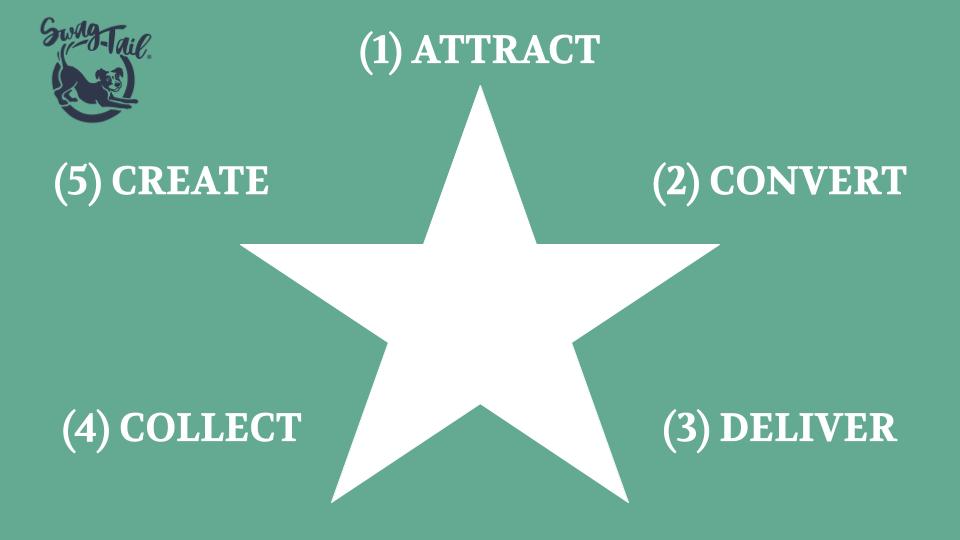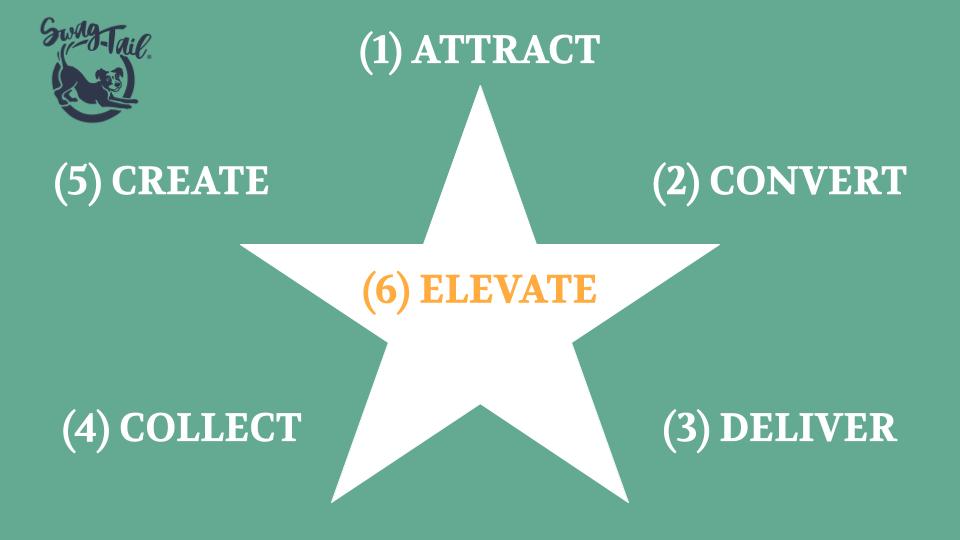 There are various ways to track your progress on your yoga mat–how you feel in your body, the strength and flexibility of your muscles, and your ability to attain certain postures. But how do you track your progress as a yoga professional? That’s where business metrics come in! You can follow simple stats when starting your yoga business to prevent feeling overwhelmed. And you can adjust which numbers to follow over time so that you can make minor changes to your business in order to keep growing with clarity and confidence.
There are various ways to track your progress on your yoga mat–how you feel in your body, the strength and flexibility of your muscles, and your ability to attain certain postures. But how do you track your progress as a yoga professional? That’s where business metrics come in! You can follow simple stats when starting your yoga business to prevent feeling overwhelmed. And you can adjust which numbers to follow over time so that you can make minor changes to your business in order to keep growing with clarity and confidence.
A few weeks back, I read the book Clockwork, by Mike Michaelowicz. In it, he reveals the business metrics he tracks over time and the simple way in which he does it. I got really excited about this for a number of reasons.
First, I’m a super nerd and love to keep track of stats. I have a spreadsheet that contains data about the monthly growth of my business. And, truth be told, I even record various aspects of my golf game–from the number of fairways I hit each round to the total amount of putts in 18 holes of play. I just think numbers are a fantastic way to understand where you’re at in relation to where you’re going. The good news is that if you’re not into math, this article is designed to make the process of business metrics simple and fun.
Second, I found that the business metrics used by Michaelowicz are very similar to the business analytics I use when working with my own clients.
In this post, I blend the best of both our ideas. Below, you’ll discover the 5 categories Michaelowicz suggests you use to gauge the health of your yoga business. Plus, you’ll get my visual take on how this works together–including how your emotional well-being plays a role in your evolution.
WHAT IS A BUSINESS METRIC?
Before we dive into the process you can use to select business metrics for your business, you’ll need to know what a business metric is in the first place. Essentially, it’s something that you can measure and compare.
A business metric is usually a number–like the number of private clients you serve each week.
It can also be a YES/NO or ON/OFF measurement. For example, you might want to know if your class sizes are increasing. While you can also measure this in a number, using a simple YES/NO response will provide more general feedback about your progress. This is especially helpful when you are first starting out, and don’t want to get discouraged if growth is slow.
Business metrics help you know if elements of your yoga business are flowing well. They also:
- Set expectations of what is normal in your business
- Indicate when things are trending higher or lower than normal
- Notify you if there is a problem
- Help you find the source of an issue

BUSINESS METRICS ARE LIKE A DASH PANEL
Have you driven a vehicle lately? If so, did you ever look below your dashboard to the panel of gauges during that trip? Even if you didn’t think twice about it, you likely glanced past the steering wheel once or twice to make sure all was going well on your trip.
The dash panel is really an important feature in your car. It serves to give you feedback about various aspects of your driving experience.
You have a speedometer to gauge how fast you’re traveling. There is an odometer to inform you of how far you’ve traveled thus far (as well as make you aware of any upcoming maintenance that might be needed on the engine due to that number). Plus, you have warning signals–like the “check engine” light or “low fuel” indicator–to tell you action is needed immediately.
Just like you track your progress when behind the wheel, you also want to observe your movement forward in your business.
BENEFITS OF TRACKING YOUR PROGRESS
Business metrics help you know if elements of your yoga business are flowing well. When you select critical elements to measure from the beginning, you can:
- Scale your yoga business quickly
- Save time and energy as you grow
- Make minor tweaks as you go, instead of waiting for large adjustments to be made
- Reduce stress
- Gain confidence as a professional
- Increase your profit, and
- Love what you do each step of the way
With all of these benefits in mind, I suggest you start tracking your business metrics using these 6 categories. Plus, you can download our worksheet which will lead you through a step-by-step process to select the right metrics to measure now.

(1) ATTRACT
The first category involves the way in which you attract new clients to your yoga business. While you might teach yoga to your family and friends when just starting out, you will likely need to move beyond your sphere of influence to continue growth. Thus, you’ll want to measure and track how effective you are in doing this.
One of these metrics for attracting new clients might be beneficial for you today:
- Number of people who follow you on a social media platform
- Number of people who actively (and regularly) engage with you on a social media platform
- Click-through ratio of your social media advertising
- Total count of people who watched your yoga videos on YouTube
- Number of redeemed gift cards at your studio
- Weekly/monthly count of new students to your studio
- Weekly subscribers to your blog
- Inquiries about upcoming teacher trainings or events
- Number of downloads on your website for a discount to your studio/classes/etc
- Number of downloads for a freebie on your website
- Total count of unique visitors to your website
What other ways are you calculating your reach to your community? Remember, you only need to pick one metric in this category that is important to your business right now. This leads us to the second category.

(2) CONVERT
Conversion is the rate at which potential clients turn into actual clients or make a purchase from your yoga business. This number will never be 100% because there will be people who won’t be a good fit for what you have to offer. They might benefit from another style of yoga, or they might just be someone who wanted to sample yoga to see if they would even like it at all.
For example, I have a free business questionnaire available on my website. This is one way I attract potential clients to Swagtail and offer value to others. Mostly, it’s a way to see if I am going to be a good fit working with yoga businesses.
Currently, there are about 40 people filling out the form each month. And, since I want a 25% conversion rate, the goal is to have at least ten of those potential clients turn into paying ones. Your number might look different than mine, based on the age and reach of your business. However, it’s important to have a goal in mind so that you can tell when you’re falling short of it.
Steps to track your conversion rate?
- Decide which products or services you measure currently.
- Look at your sales over the past year (each quarter at a time) to get a realistic picture of current conversions for that product or service. (If you’re just starting out, consider how many private clients you want to teach and how many group classes you want on your schedule, and create a realistic goal for yourself).
- Write down your goal conversion rate for each product or service. (Just be realistic here, and forego your dream numbers for something actually attainable)
- Pick the product or service that is making you the most money (in relation to your time and energy output)
- Use that as your business metric to track over the next few quarters.
Then, discover how well you’re doing at delivering those products and services to your clients by tracking the third category.

(3) DELIVER
Once your potential client turns into a paying client, it’s up to you to deliver high-quality goods and services. Here are some of the simple ways you can tell if you are making good on your promise to your clients:
Customer Retention–How many clients come back again and again? How many renew their class packages or monthly memberships?
Online Reviews–How often do you get positive reviews online from your existing clients? Where are most of those positive reviews sited online?
Yoga Training Graduates–If you lead yoga teacher training programs, then you are responsible to deliver lots of information to students over the course of weeks or months. The number of students that graduate with a strong knowledge base can confirm you are cultivating a great learning environment.
Once you select a business metric to track in this category, move on to the fourth.

(4) COLLECT
Cash is the lifeblood of any business (including a yoga business, and if you aren’t able to collect money for the services you provide, then your business won’t survive for long. Essentially, this fourth category is all about your ability to collect the money promised to you.
Some examples of business metrics you can use to track your ability to collect money include:
- Percentage of credit cards declined each month
- Percentage of monthly members who miss a payment
- Amount of bounced checks
- Amount of retail items returned at your studio?
- Refund requests by students or workshop participants
- Percentage of clients who paid in cash (vs credit card or check)
Remember, you simply want to ensure cash is flowing into your business at a healthy rate. Just pick one metric that helps you keep that in mind–and will indicate if that money flow is lower than expected. Then, move on to the fifth category.

(5) CREATE
There are many skills required to run a yoga business, and many hats that you wear as an entrepreneur. Some of these roles are a necessary way to keep the business operating–like working with private clients or leading workshops. Other aspects are administrative, such as bookkeeping, cleaning the studio, or managing your amazing team.
However, one of the most essential aspects of growing your yoga business involves your ability to create your business. This means you can dedicate time and energy to what benefits your business most. This might be to generate client plans or invent a new class series at your studio. Or, you could be most valuable to your business by speaking to local organizations to spread the word about your services.
In any case, you want to track how much of your workweek is dedicated to your most valuable role to your company. Then, if you’re unable to reach that each week, perhaps you need to tweak your systems (like delegate tasks, hire a freelancer, or simplify your product offerings). While this may seem like the most business metric to address, there’s actually another element that will affect this and the other areas dramatically.

(6) ELEVATE
Michalowicz doesn’t address the emotional element of running a business, which is why I added a bonus element to this business metrics diagram. The sixth way to track your progress is to gauge how you feel about your business.
Yoga is a spiritual practice and any negative emotional state can impact your ability to connect with your students. If you’re frustrated with your growth or have lost motivation to teach, then you likely can’t do any of the other five elements of your business well. This is not to say there won’t be bad days or challenging yoga clients. Yet, if you regularly view your emotional state, you can re-correct when going in the wrong direction.
So, your goal is to elevate your emotional state. This will increase your efficiency, productivity, and overall enjoyment as you grow your yoga business.
Ways to Track your Emotions:
- Create a morning routine to start each day with clarity and purpose
- Meditate
- Take quiet moments throughout the day to check in with how you feel
- Journal your thoughts
PUTTING IT TOGETHER
Business metrics are a way to track your progress as a yoga professional. They indicate when things are flowing smoothly and let you know if a problem arises. Mostly, these metrics save you time and energy because you can address any minor issues before they become full-blown disasters–preventing headaches and frustration as your business grows. Just remember the following when selecting your 6 business metrics to track:
- Pick the most critical things you want to measure. This may change over time so only select the most important right now.
- Keep it simple. You want to track things you can see and evaluate at the moment (without any fancy algorithms or calculators necessary)
- Select one business metric per category above. This will not only keep your tracking system simple but will prevent overwhelm when looking at your business data.
Take Action Now:
- Download our Yoga Business Metrics Worksheet
- Get the Clockwork book, or listen to an interview with Michaelowicz on the subject of business metrics
- Work with me to refine your business metrics. Many yoga professionals are not sure if their numbers are realistic. Other times, problems can be spotted more readily by an outside source. That’s why I work with yoga businesses to increase their efficiency and productivity. Email me to get started today.








Leave A Comment